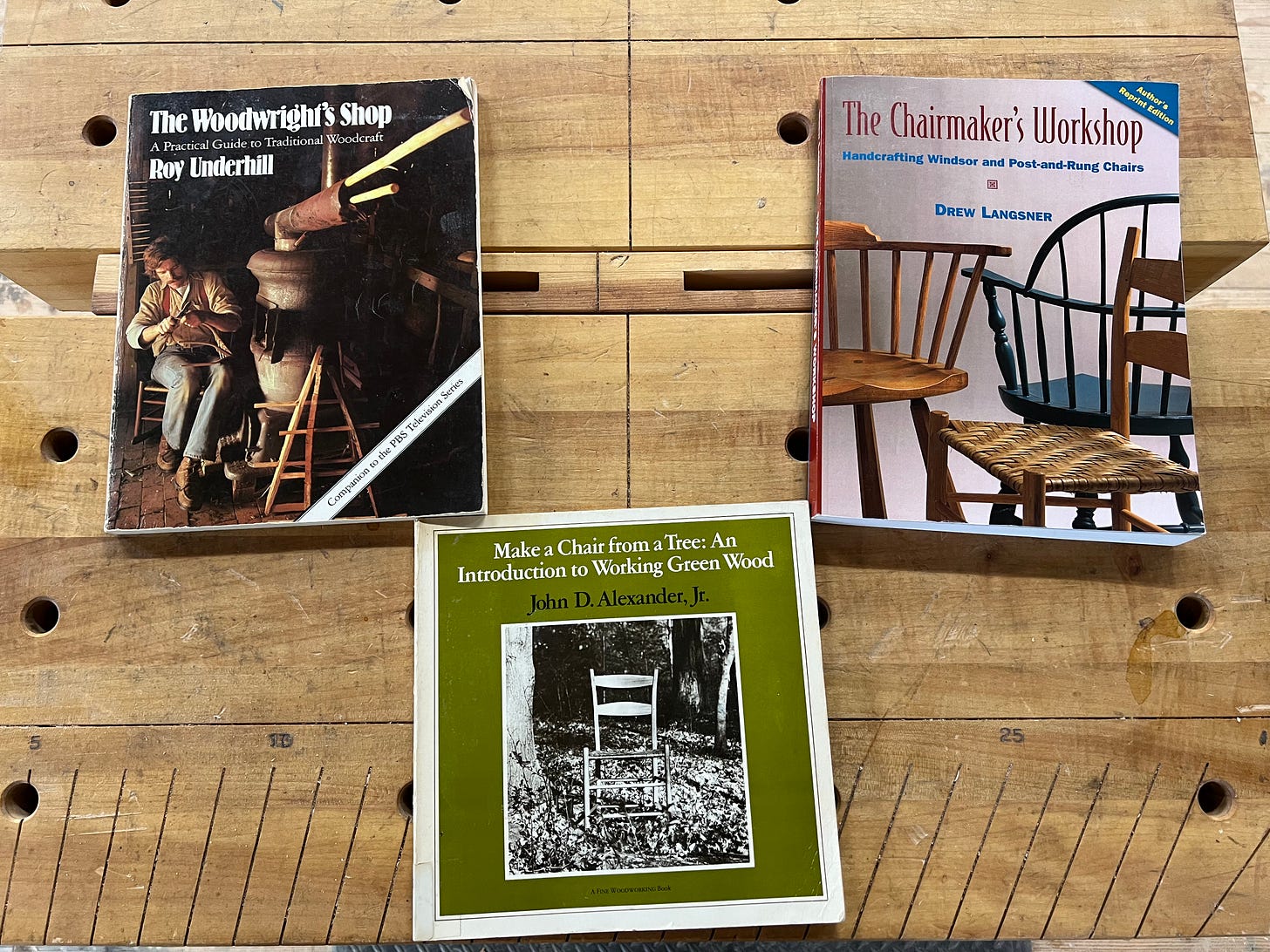For the past seven years (or so), I’ve built, researched, and written about the ladderback form. I’ve met and discussed the chair with both professionals and amateurs alike. A few themes emerged from those conversations that I want to share today.
First, a few notes on terminology. I think of “post-and-rung” as the umbrella term for a greenwood ladderback chair, with the post often of wetter wood and rung drier, creating a strong joint that in traditional work didn’t require glue. Ladderback chairs are frequently, but not exclusively, of post-and-rung construction.
There are a multitude of different ladderback styles. There are gorgeous turned chairs by Richard Poynor . Dave Sawyer made a charming ladderback before turning his abilities towards Windsors. Jennie Alexander, Drew Langsner, and Roy Underhill all wrote about chairmaking between the 1970’s and 1990’s (Alexander’s book was published in 1978 and continues to be a powerhouse publication on chairmaking today). I love seeing Peter Follansbee’s JA chairs. Then there are the contemporary chairs of Charlie Ryland and Robell Awake, whose chairs are currently on display at the Center for Craft in Asheville, NC. And personally, one of my favorite chairs is made by Tim Manney (who also shared the process in an excellent Fine Woodworking article in 2019).
When discussing any style ladderback in class, or with other woodworkers, by far the most common statement I receive when looking at a chair is, “That’s a Jennie Alexander chair.” To which I usually respond (if it’s not an Alexander chair), “Yes and no. This is a cousin of the Alexander chair.” Jennie Alexander’s chair, because of the beauty of her two-slat chair and the reach/success of “Make a Chair From a Tree”, has seemingly become synonymous with “ladderback chair.”
But there are more differences to ladderbacks than the obvious cosmetic ones. The largest being that the Alexander-style chair is built sides-first, then assembling the front and the back to complete the form. I build the front and back assemblies first.
Both ways have advantages and drawbacks.
Keep reading with a 7-day free trial
Subscribe to With Working Hands to keep reading this post and get 7 days of free access to the full post archives.


